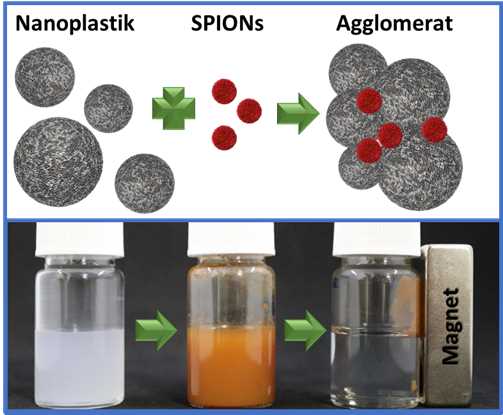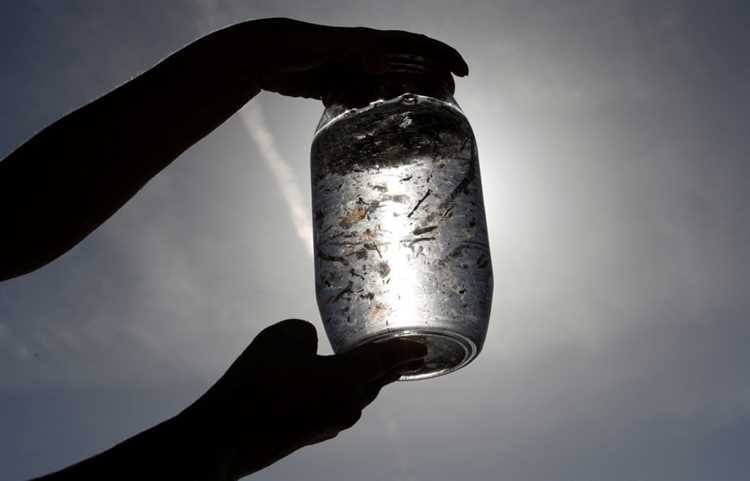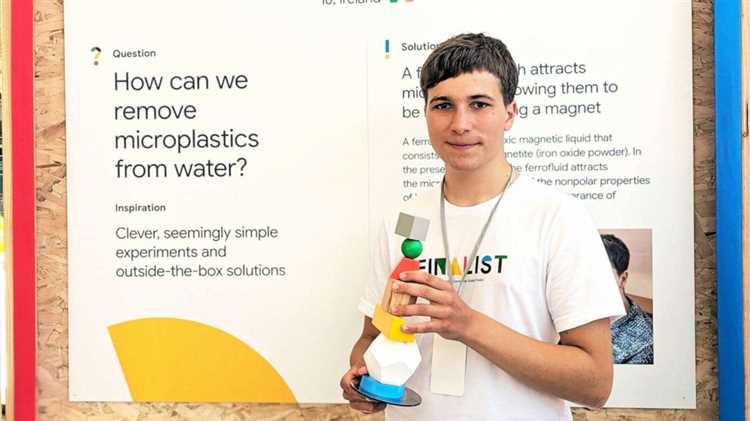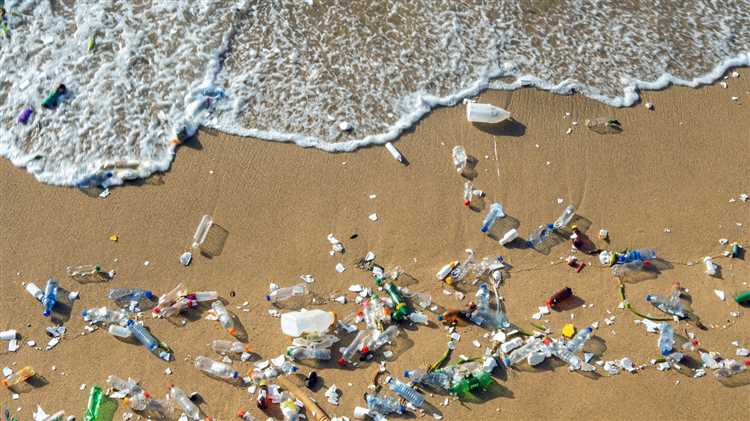
Microplastics, tiny particles of plastic measuring less than 5 millimeters in size, have become a widespread environmental issue. They are found in our oceans, rivers, and even in the air we breathe. These particles come from a variety of sources, including the breakdown of larger plastic items and the release of microbeads found in personal care products.
The presence of microplastics in our environment poses a significant threat to both marine life and human health. Marine animals often mistake these particles for food, which can lead to digestive problems and starvation. Additionally, microplastics have been found in seafood consumed by humans, raising concerns about potential health risks.
Given the scale of the problem, many scientists and researchers are working towards finding effective solutions to remove microplastics from the environment. Various technologies and methods have been proposed, ranging from physical filtration systems to chemical treatments.
One promising approach is the development of innovative filters and membranes that can selectively capture microplastics while allowing other substances to pass through. These filters utilize different mechanisms, such as size exclusion or electrostatic attraction, to effectively trap microplastics. Additionally, some researchers are exploring the use of natural materials, such as chitosan derived from crustacean shells, which have shown promise in capturing microplastics in laboratory tests.
However, removing microplastics from the environment is not a simple task. The small size and widespread distribution of these particles present significant challenges in developing effective and scalable solutions. Furthermore, the cost and energy requirements of implementing large-scale microplastic removal systems need to be carefully considered.
While the road to effectively removing microplastics may be challenging, it is crucial that we continue to explore and invest in innovative solutions. By tackling this issue head-on, we can mitigate the environmental and health risks associated with these tiny plastic particles and work towards a cleaner and more sustainable future.
- Exploring Solutions to Remove Microplastics
- The Challenges of Microplastic Removal
- Potential Solutions
- The Impact of Microplastics on the Environment
- 1. Ecological Impact
- 2. Human Health Concerns
- Conclusion
- Understanding the Sources of Microplastics
- 1. Primary Sources
- 2. Secondary Sources
- 3. Industrial Sources
- 4. Atmospheric Deposition
- 5. Runoff and Sewage Discharge
- Existing Methodologies for Microplastic Removal
- 1. Filtration Methods
- 2. Coagulation and Flocculation
- 3. Electrocoagulation
- 4. Biological Methods
- 5. Advanced Oxidation Processes
- Challenges and Limitations in Microplastic Removal
- New Technologies and Innovations in Microplastic Removal
- Collaboration and Research Efforts for Effective Microplastic Removal
- International Collaboration
- Research Efforts
- Question-answer:
- What are microplastics?
- How do microplastics end up in the environment?
- What are the potential risks of microplastics to the environment?
- Are there any solutions to effectively remove microplastics from the environment?
- What can individuals do to help reduce the presence of microplastics in the environment?
- What are microplastics?
- Why are microplastics a concern?
Exploring Solutions to Remove Microplastics
Microplastics have become a significant environmental concern as their presence in various ecosystems can have serious consequences on both wildlife and human health. As such, scientists and researchers have been dedicated to finding effective solutions to remove microplastics from environments such as water bodies, soil, and even the air.
The Challenges of Microplastic Removal
Removing microplastics poses several challenges due to their small size, varied composition, and widespread distribution. Conventional wastewater treatment plants are not equipped to filter out these tiny particles effectively. Additionally, microplastics can settle into sediment or become trapped in vegetation, making their removal difficult.
Another challenging aspect is the identification and quantification of microplastics. Standard techniques like microscope analysis and spectroscopy are time-consuming and labor-intensive. Therefore, developing advanced methods for accurate and efficient detection is crucial to effectively remove microplastics.
Potential Solutions
1. Filtration Systems: One solution is the implementation of filtration systems specifically designed to capture microplastics. These systems can be installed in wastewater treatment plants, stormwater drains, or even on washing machines to prevent microplastic fibers from entering water systems.
2. Bioremediation: Certain microorganisms have the ability to degrade plastic, including microplastics. Researchers are exploring the potential of harnessing these organisms to develop bioremediation techniques that can efficiently break down microplastics in various environments.
3. Electrochemical Treatment: Electrochemical oxidation and electrocoagulation are promising methods that use electricity to break down microplastics. These techniques have shown success in laboratory settings and are currently being explored for large-scale applications.
4. Education and Awareness: While technological solutions are crucial, educating the public about the effects of microplastics and promoting responsible consumption and waste management practices is equally important. Raising awareness about the issue can help reduce the overall generation of microplastics and their entry into the environment.
In conclusion, removing microplastics is a complex challenge that requires a multi-faceted approach. It involves the development of innovative technologies, as well as the implementation of sustainable practices. By exploring these solutions and continuously researching and improving upon them, we can effectively reduce the presence of microplastics in our environment and mitigate their harmful effects.
The Impact of Microplastics on the Environment
Microplastics are tiny plastic particles measuring less than 5mm in size. They are the result of the fragmentation of larger plastic items, such as bottles, bags, and packaging materials, as well as the presence of microbeads in personal care products.
The widespread use and improper disposal of plastic items have led to the accumulation of microplastics in various environments, including the oceans, rivers, and even the air we breathe. These particles have a detrimental impact on the environment, affecting both wildlife and human health.
1. Ecological Impact
The presence of microplastics in ecosystems poses a threat to the overall health and functioning of aquatic and terrestrial environments. Marine organisms, such as fish, seabirds, and turtles, mistake microplastics for food, leading to internal injuries, blockages in their digestive systems, and even death. Moreover, microplastics can accumulate toxic substances from the surrounding environment, resulting in bioaccumulation and biomagnification through the food chain.
On land, microplastics can contaminate soil and affect soil fertility and nutrient cycling. These particles can also be ingested by terrestrial animals, causing similar harmful effects as observed in marine organisms.
2. Human Health Concerns
The impact of microplastics on human health is an area of growing concern. These particles have been found in various food items, including seafood, tap water, and even bottled water.
Consuming food and water contaminated with microplastics can potentially lead to the ingestion of toxic substances associated with the particles. Research has shown that these substances, such as phthalates and bisphenol A (BPA), can have adverse effects on human health, including endocrine disruption, reproductive problems, and increased risk of certain diseases.
In addition to ingestion, microplastics can also be inhaled, with studies suggesting that airborne microplastics are present in indoor and outdoor environments. The long-term effects of inhaling microplastics are still not fully understood but may pose risks to respiratory health.
Conclusion

The presence of microplastics in the environment has far-reaching consequences for both ecosystems and human health. Efforts to mitigate the release of plastic waste, improve waste management systems, and develop innovative solutions for the removal of microplastics are essential for safeguarding the environment and our well-being.
It is crucial for individuals, industries, and governments to work together to reduce plastic pollution and find effective ways to remove microplastics from the environment. By taking action now, we can help minimize the impact of microplastics and ensure a healthier future for our planet.
Understanding the Sources of Microplastics
Microplastics, tiny particles of plastic less than 5 millimeters in size, have become a major global issue due to their widespread presence in the environment. Understanding the sources of microplastics is crucial to effectively tackling this problem.
1. Primary Sources
Primary sources of microplastics include items that are intentionally made to be small, such as microbeads in personal care products and microfibers from synthetic clothing. These microplastics are often released directly into the environment during use and disposal.
2. Secondary Sources
Secondary sources of microplastics are the result of larger plastic items breaking down over time. For example, plastic bags, bottles, and packaging materials can fragment into smaller pieces due to exposure to sunlight and physical forces. These fragmented pieces eventually become microplastics.
3. Industrial Sources
Industrial sources of microplastics include particles released during various manufacturing processes. For instance, plastic pellets or nurdles used in the production of plastic products can escape into the environment during transport or handling. Additionally, microplastics can be formed as a byproduct of plastic production and processing.
4. Atmospheric Deposition
Microplastics can also enter the environment through atmospheric deposition. These particles can be transported through the air and deposited onto land and water surfaces. This process can occur due to the fragmentation and degradation of larger plastic items, as well as the release of fibers from synthetic textiles.
5. Runoff and Sewage Discharge

Runoff from urban areas and agricultural fields can carry microplastics into rivers, lakes, and oceans. Additionally, sewage discharge can introduce microplastics into aquatic systems, as personal care products and synthetic fibers from clothing are often washed away into wastewater treatment plants.
By understanding the various sources of microplastics, researchers and policymakers can develop targeted strategies to reduce their release and prevent further pollution. It is crucial to address both the primary and secondary sources to effectively combat the issue of microplastic pollution.
Existing Methodologies for Microplastic Removal
Microplastic pollution has become a significant concern worldwide due to its potential harmful effects on ecosystems and human health. Various methodologies have been developed and tested to effectively remove microplastics from the environment.
1. Filtration Methods
One common approach to remove microplastics is through filtration methods. This involves the use of filters with specific pore sizes that can capture microplastic particles while allowing water to pass through. Different types of filters, such as sieves, mesh screens, and membrane filters, have been used in various settings, such as wastewater treatment plants and water filtration systems.
2. Coagulation and Flocculation
Coagulation and flocculation techniques involve the addition of chemicals, known as coagulants and flocculants, to aggregate and remove microplastic particles from water. Coagulants help destabilize the microplastics’ surface charge, allowing them to aggregate, while flocculants aid in forming larger mass particles for easier removal. This method is commonly used in water and wastewater treatment processes.
3. Electrocoagulation

Electrocoagulation is an electrochemical process that uses an electric current to destabilize and remove microplastic particles from water. This technique involves the introduction of metal ions into the water, which leads to the formation of metal hydroxide coagulants that can adsorb and bind with microplastics. The coagulated particles can then be easily separated from the water.
4. Biological Methods
Biological methods for microplastic removal involve the use of microorganisms to break down or degrade the microplastic particles. Some microorganisms have the ability to produce enzymes that can break down the polymer chains in microplastics, making them smaller and more easily biodegradable. This approach has shown promise in laboratory settings, but further research is needed to optimize and scale it up for practical application.
5. Advanced Oxidation Processes
Advanced oxidation processes (AOPs) utilize reactive oxidants, such as hydrogen peroxide or ozone, to degrade and remove microplastics. These processes generate highly reactive hydroxyl radicals that can break down the polymer chains in microplastics, leading to their degradation. AOPs have been studied in lab-scale experiments, but their application on a larger scale is still being explored.
- Filtration methods
- Coagulation and flocculation
- Electrocoagulation
- Biological methods
- Advanced oxidation processes
While these existing methodologies show promise in removing microplastics, none of them provide a comprehensive solution that can effectively remove microplastics on a large scale in various environmental contexts. Further research and development are needed to refine existing methods and explore new approaches to address this pressing issue.
Challenges and Limitations in Microplastic Removal
While there are various methods and technologies being developed to remove microplastics from the environment, there are still several challenges and limitations that need to be addressed.
Firstly, one of the main challenges is the small size and widespread distribution of microplastics. These tiny particles can range in size from a few micrometers to less than a millimeter, making it difficult to effectively locate and remove them from the environment. Additionally, microplastics can be found in various habitats such as oceans, rivers, soil, and even in the air, making their removal even more challenging.
The second challenge is the diversity of microplastic types and sources. Microplastics can originate from a wide range of sources, including plastic packaging, textiles, personal care products, and even from the breakdown of larger plastic debris. Different types of microplastics may require different removal methods, as their physical and chemical properties can vary significantly. This presents a challenge in developing universal removal techniques that can effectively target all types of microplastics.
Furthermore, the potential harm to non-target organisms is a significant limitation in microplastic removal. Many removal methods, such as filtration systems, may also capture and harm beneficial organisms in the process. It is essential to develop techniques that can selectively target microplastics without causing harm to other organisms in the environment.
Another limitation is the cost-effectiveness of microplastic removal technologies. Developing and implementing large-scale removal methods can be costly and require substantial resources. It is crucial to find cost-effective solutions that can be scaled up to effectively remove microplastics from the environment without straining limited resources.
| Challenges | Limitations |
|---|---|
| Small size and widespread distribution of microplastics | Diversity of microplastic types and sources |
| Difficulty in locating and removing microplastics | Potential harm to non-target organisms |
| Cost-effectiveness of removal technologies |
In conclusion, while there are ongoing efforts to develop effective microplastic removal methods, there are still significant challenges and limitations that need to be addressed. These include the small size and widespread distribution of microplastics, the diversity of microplastic types and sources, the potential harm to non-target organisms, and the cost-effectiveness of removal technologies. Overcoming these challenges will be crucial in effectively removing microplastics from the environment and mitigating their impact on ecosystems and human health.
New Technologies and Innovations in Microplastic Removal
The increasing concern over the presence of microplastics in our environment has sparked a wave of innovation in finding effective removal solutions. Traditional methods, such as filtration and sedimentation, have proven to be insufficient in capturing these tiny particles. However, recent advancements in technology have paved the way for new approaches to address this growing problem.
One promising innovation is the use of nanotechnology to capture microplastics. Researchers have developed nano-sized particles that have a high affinity for plastics, allowing them to selectively bind to microplastics and remove them from various sources, including water bodies and wastewater. This newfound ability to target and remove microplastics at a molecular level offers a potentially efficient and cost-effective solution.
Another innovative technology utilizes specially designed filters that are capable of capturing microplastics without impeding the flow of water. These filters are made up of a unique combination of materials that have been engineered to have a high surface area and a strong electrostatic charge. This combination effectively attracts and captures microplastics while allowing water to pass through effortlessly.
In addition to technological innovations, new approaches are also being explored to remove microplastics from the environment. One such approach is the use of bio-based materials, such as biodegradable polymers, to replace conventional plastics. By ensuring that the materials we use are biodegradable and environmentally friendly, we can significantly reduce the accumulation of microplastics in our ecosystems.
Furthermore, advanced robotics and artificial intelligence are being leveraged to develop autonomous systems for the detection and removal of microplastics. These systems can operate underwater, scanning large areas and identifying microplastic hotspots. Once identified, robotic arms equipped with specialized tools can be used to physically remove the microplastics, minimizing the impact on marine life and habitats.
It is important to continue investing in research and development to further enhance these new technologies and innovations. This includes improving their efficiency, scalability, and affordability to ensure widespread implementation. With concerted efforts and continued advancements, we can mitigate the detrimental effects of microplastics on our environment, paving the way for a cleaner and healthier future.
Collaboration and Research Efforts for Effective Microplastic Removal
The issue of microplastic pollution has gained significant attention in recent years, with researchers, scientists, and organizations around the world working together to develop effective strategies for its removal. This collaborative effort is crucial in addressing this global problem and finding sustainable solutions.
International Collaboration
The fight against microplastic pollution requires a coordinated international response. Governments, environmental agencies, and research institutions from different countries are pooling their resources and knowledge to understand the extent of the issue and develop innovative removal techniques.
International conferences and forums serve as platforms for scientists and researchers to exchange ideas, present findings, and discuss potential solutions. These collaborations foster a global perspective and encourage the sharing of resources and expertise, leading to more effective strategies for microplastic removal.
Research Efforts
A significant amount of research is being conducted to better understand the sources, distribution, and impact of microplastics. These studies are essential for developing effective removal methods and mitigating their environmental and health effects.
Researchers are using various techniques such as spectroscopy, microscopy, and molecular analysis to identify different types of microplastics and track their journey through the environment. This allows for targeted removal strategies and helps prioritize areas with higher concentrations of microplastic pollution.
| Research Focus | Description |
|---|---|
| Biodegradable Alternatives | Scientists are exploring the development of biodegradable materials to replace conventional plastics. These materials are designed to degrade naturally and pose minimal harm to the environment. |
| Filtration Systems | Efficient filtration systems are being developed to remove microplastics from wastewater treatment plants, preventing their entry into rivers, lakes, and oceans. |
| Mechanical Removal | Innovative techniques, such as using floating booms and nets, are being tested to physically capture microplastics in water bodies, preventing their further spread. |
| Nanotechnology | Nanoparticles with specific properties are being explored to attract and bind microplastics, facilitating their efficient removal from various environments. |
These research efforts are part of a larger collective endeavor to find effective and sustainable solutions to microplastic pollution. Collaboration and continuous research are key to tackling this global challenge and safeguarding our environment for future generations.
Question-answer:
What are microplastics?
Microplastics are tiny pieces of plastic that are less than five millimeters long. They can be either manufactured intentionally for use in products like cosmetics, or they can result from the breakdown of larger plastic items over time.
How do microplastics end up in the environment?
Microplastics can enter the environment in a variety of ways. They can be washed down the drain when we use products that contain them, such as facial scrubs. They can also be released into the air when we use products that contain microplastics, which can then settle on land or water. Additionally, larger plastic items can break down into microplastics over time.
What are the potential risks of microplastics to the environment?
Microplastics can cause harm to marine life and ecosystems. They can be ingested by marine organisms, leading to physical harm or even death. They can also accumulate in the food chain, potentially exposing humans to harmful chemicals. Additionally, microplastics can contribute to pollution of water bodies, which can have negative impacts on water quality and biodiversity.
Are there any solutions to effectively remove microplastics from the environment?
There are several emerging technologies and methods being explored to remove microplastics from the environment. Some examples include filtration systems that can capture microplastics from water sources, and innovative cleaning technologies that can remove microplastics from beaches and shorelines. However, it is important to note that complete removal of microplastics from the environment is a complex challenge, and more research is needed to develop effective and scalable solutions.
What can individuals do to help reduce the presence of microplastics in the environment?
There are several steps individuals can take to help reduce the presence of microplastics in the environment. This includes avoiding products that contain microplastics, such as facial scrubs and cleaning products. It is also important to properly dispose of plastic waste to prevent it from breaking down into microplastics. Additionally, supporting initiatives and organizations working to reduce plastic pollution can make a difference.
What are microplastics?
Microplastics are tiny particles of plastic that are less than 5 millimeters in size. They can come from a variety of sources, such as the breakdown of larger plastic items or the shedding of microfibers from clothing.
Why are microplastics a concern?
Microplastics are a concern because they can have negative impacts on both the environment and human health. They can accumulate in bodies of water, posing a threat to marine life. Additionally, microplastics can enter the food chain and potentially be ingested by humans.
